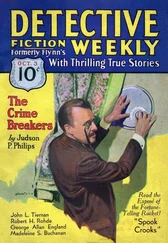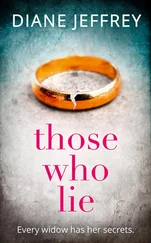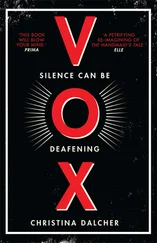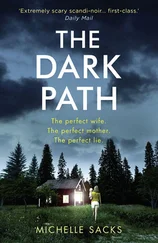The victim in Trent’s Last Case is an American multimillionaire, an exploiter of the poor and a ruthless financial buccaneer who is found dead in the grounds of his country house with a bullet through the eye. The detective is an amateur sleuth and a painter, Philip Trent, and only at the end of the book do we know why this is his last case. The clues are fairly presented and there is at the end not one surprising disclosure, but two. The novel is unusual in that Trent falls in love with the victim’s widow, Mabel Manderson, and unlike many of the novelists of the Golden Age, Bentley was as concerned with the portrayal of character, particularly that of Manderson, as he was with providing a coherent and exciting puzzle. The dominance of the love interest was also unusual. Subsequent writers tended to agree with Dorothy L. Sayers that their detectives should concentrate their energy on clues and not on chasing attractive young women. The book is also original in that Trent ’s solution to the mystery, although based on the clues available, proves erroneous. The fact that the detective hero doesn’t solve the crime, though offending against what many see as the prime unwritten rule of detective fiction, certainly makes Trent’s Last Case innovative.
Writing about the novel in Bloody Murder , Julian Symons struggles to understand the regard in which many hold the novel, largely because of the dichotomy between the opening paragraphs, which deal with an ironic savagery with Manderson’s murder, and the change of mood in the second part. There is also an uncertainty in Bentley’s characterisation of Trent, who at times is almost a figure of fun, and yet whose love affair is treated with great seriousness and so, far from being a diversion to the detective element, is cleverly integrated with the plot. Nevertheless, instead of being later regarded as an iconoclastic or ironic novel, Trent’s Last Case was seen as perhaps the most significant and successful immediate precursor of the Golden Age.
The writers of the Golden Age attracted to this fascinating form were as varied as their talents. It must at times have seemed as if everyone who could put together a coherent narrative was compelled to have a go at this challenging and lucrative craft. Many writers who made a reputation for detective fiction already had successful careers in other fields. Nicholas Blake, whose detective is Nigel Strangeways, was the poet Cecil Day-Lewis (1904-1972). Edmund Crispin was the pseudonym of Robert Bruce Montgomery (1921-1978), a musician, composer and critic. Cyril Hare was Judge Alfred Alexander Gordon Clark (1900-1958). Monsignor Ronald Knox (1888-1957) wrote under his own name, as did G. D. H. Cole (1889-1959) and his wife, Margaret (1893-1980), who were both economists. These novelists, already successful in other fields, produced books which have a liveliness, humour and distinction of style which places them well above what Julian Symons categorises as “the humdrums.” They seem, indeed, to have been written as much for the amusement of the author as for the entertainment of his readers. Michael Innes, the pseudonym of John Innes Mackintosh Stewart (1906-1994), was an Oxford don and Professor of English at the University of Adelaide for ten years. His detective, Sir John Appleby of Scotland Yard, is one of the earliest, possibly the first, of that group of academic sleuths who are sometimes referred to as “dons’ delights.” Appleby is, however, very far from an amateur, having begun his career in the police and progressed naturally through the ranks from inspector to the highest rank, Commissioner of the Metropolitan Police, a promotion which I find somewhat hard to believe. Innes produced in Appleby probably the most erudite of all fictional detectives in books which are witty, literate, larded with quotations chosen to be unfamiliar to all but learned academics and with plots which are sometimes more bizarre than credible. One of the most interesting aspects of Appleby is the way in which he ages and matures so that readers who fall under his spell can have the satisfaction of vicariously living his life. From his first case, the murder of Dr. Umbleby in 1936, to that of Lord Osprey in 1986, no other detective writer has produced for his hero such a well-documented life, including Appleby’s retirement. This is very rare. Although I admire Ian Rankin’s temerity in allowing Detective Inspector John Rebus to retire, most of us with a serial hero are content to take refuge in the fashionable illusion that our detectives are immutably fixed in the first age we assigned to them; although in a moment of disillusion they may talk of retiring, they seldom actually do so.
Other prominent academics joined in the game, perhaps intrigued by the challenge set by the rules which were laid down by Ronald Knox in the preface to Best Detective Stories 1928-29 , which he edited. The criminal must be mentioned in the early part of the narrative but must not be anyone whose thoughts the reader has been allowed to follow. All supernatural agencies are ruled out. There must not be more than one secret room or passage. No hitherto undiscovered poisons should be used or, indeed, any appliance which needs a long scientific explanation. No Chinamen must figure in the story. No accident must help the detective, nor is he allowed an unaccountable intuition. The detective himself must not commit the crime or alight on any clues which are not instantly produced for the reader. The stupid friend of the detective, the Watson, should be slightly, but no more than slightly, less intelligent than the average reader, and his thoughts should not be concealed. And, finally, twin brothers and doubles generally must not appear unless the reader has been duly prepared for them.
These rules, if accepted as mandatory, would have reduced the detective story to a quasi-intellectual puzzle in which the reader would be exercising his intelligence, not only against the fictional murderer, but against the writer, whose quirks and cunning ploys aficionados set out to recognise and confute. Rules and restrictions do not produce original, or good, literature, and the rules were not strictly adhered to. The Watson became superfluous relatively soon and, having a tendency, indeed an obligation, to be boring, was rarely missed. But writers obviously felt the need to have a character to whom the detective could communicate, however slightly, the progress of his investigation, as much for the reader’s benefit as for his own, and commonly a servant provided this convenient expedient. Dorothy L. Sayers’s Lord Peter Wimsey had Bunter and could of course discuss the progress of the case with his brother-in-law, Chief Inspector Parker. Margery Allingham’s Albert Campion had his cockney manservant, Magersfontein Lugg, but Lugg seems designed more as comic relief than a sounding board for his master’s theories, and Campion, who frequently worked with the police, could rely more rationally on Inspector Stanislaus Oates and Charlie Luke. After the departure of Captain Hastings, Agatha Christie’s Poirot made something of a confidant of Chief Inspector Japp, but otherwise both he and Miss Marple preferred to work in isolation, their reticence broken only by their occasional enigmatic hints and comments. One rule was brilliantly broken by Agatha Christie, arch-breaker of rules, in her long-running play The Mousetrap . She perpetrated an even more audacious deception on the reader in The Murder of Roger Ackroyd , where the narrator proves to be the murderer, an ingenious if defensible defiance of all the rules, and although she provided perfectly fair clues, some readers have never forgiven her. The prohibition against Chinamen is difficult to understand. Or was it perhaps the general view that Chinamen, if inclined to murder, would be so clever and cunning in their villainy that the famous detective would be unfairly hampered in his investigation? It is possible that Monsignor Knox was obliquely referring to Dr. Fu Manchu, that oriental genius of crime created by Sax Rohmer, who for nearly fifty years between 1912 and 1959 pursued his evil purposes while no doubt contributing to racial prejudice and fear of the menacing Yellow Peril.
Читать дальше












